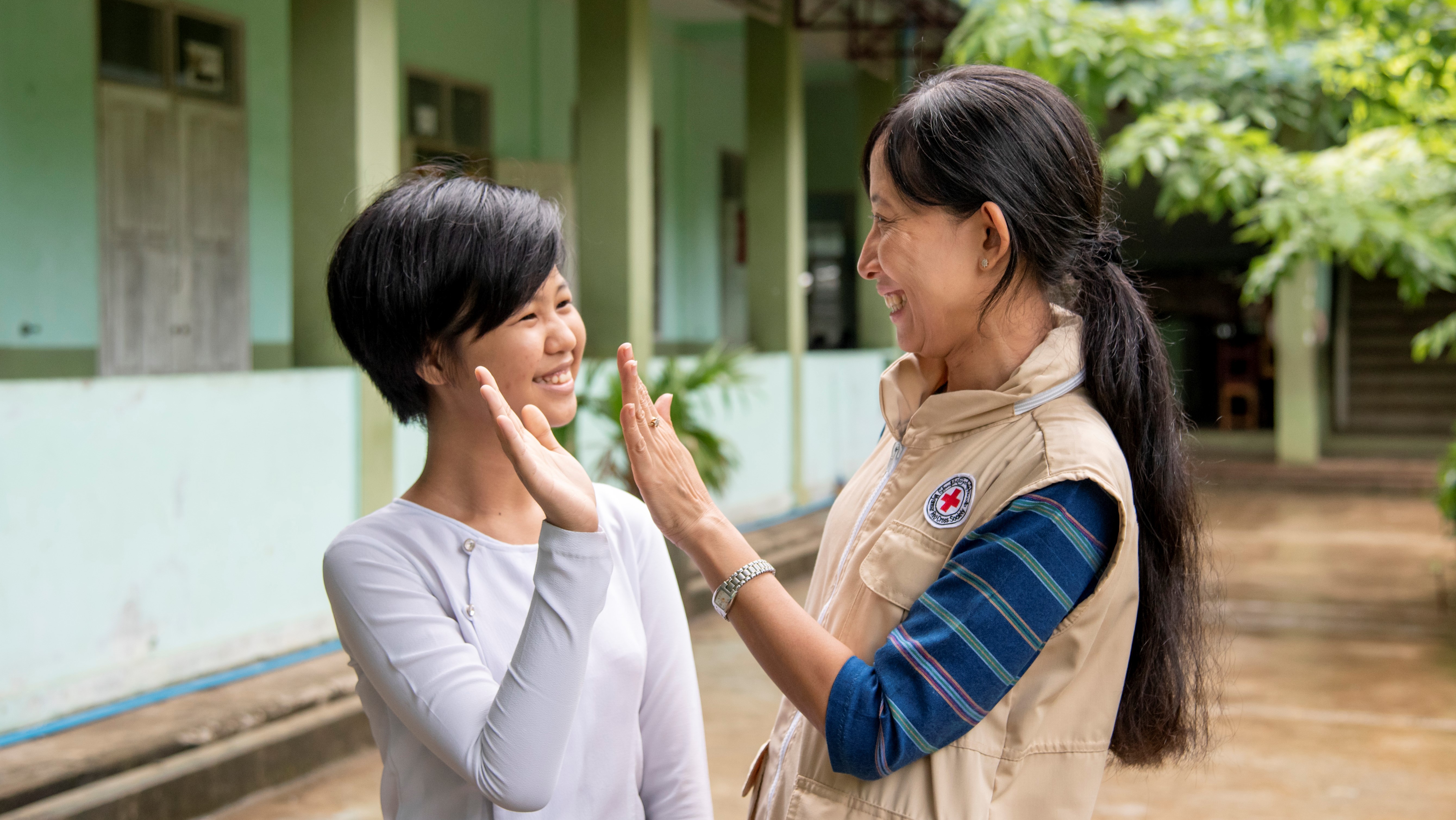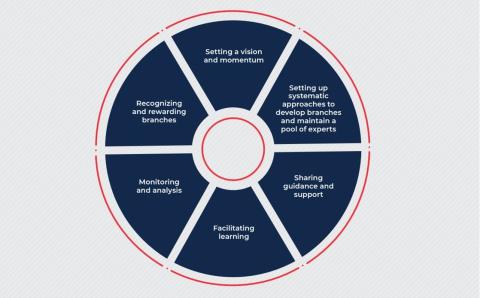
This section explores how two other groups can support a branch to develop itself: the wider National Society, and (if they are present) international partners.
Most National Societies have a branch development or organisational development function that works with branches to support their development. The extent to which the national organisation can direct what branches do depends on branch legal status and how National Society Statutes define the relationship between branches and the wider National Society.
Below are some typical activities by National Societies to strengthen individual branches and the overall network of branches.
For example, by setting a common definition of a strong Branch, setting minimum standards and framing Branch Development approaches.
It is important to acknowledge that building momentum to embark on a Branch Development journey may take time, depending on the relationship the National Headquarters has with its Branches. For this reason, the engagement of Branches in the process of setting a vision towards Branch Development is essential.
This action also serves as an opportunity to better link up service delivery approaches (especially for national programmes) to the vision and work of Branch Development;
Potential actions may include:
A) uniting different NHQ departments to build a shared understanding of their roles in contributing to Branch Development;
B) agreeing on common standards/requirements for Branches in the area of finance management, reporting and volunteer management, as these topics potentially have the risk to establish duplicated/parallel approaches per programme.
For example, by setting Branch assessment approaches and selected tools (such as BOCA) and conducting regular training to maintain a pool of trained facilitators.
Essential roles of a National Headquarters in sharing guidance and providing support mechanisms supports individual Branches on approaches to follow up on its development plan.
In some cases, the National Headquarters support Branches by developing a Branch development guide/handbook, pooling resources, setting seed funding, and providing technical guidance and input to implement its plans.
Fostering shared knowledge and action across Branches help facilitate learning and collective improvement.
Some National Societies do this by collecting good practice and sharing it with all Branches, documenting good practice, analyzing success to replicate it, facilitating and setting peer-support mechanism/branch twinning or pairing approach, or linking information and knowledge to help enable Branches.
This help developing an overview on collective progress and inform an improved national strategy towards approaching Branch Development.
Some National Societies conduct this by mapping all outcomes from Branch assessments, analysing the collective strengths and weaknesses to inform strategic investment on priority development areas to facilitate resources and potential support.
This keeps Branches motivated to function better.
Some National Societies approach this by setting up an annual process of performance measurement to identify the best-performing Branches and to allow them to offer rewards. This process also helps to take measures so that comparatively weaker Branches grow and perform better.

Sometimes branches work with international partners who provide financing to carry out short term projects. Such relationships can be a source of skills and financial resources for branches
However, big projects can also damage long-term branch development, as financial resources change the way that the branch is perceived in communities, and volunteers and members start to expect payment for their engagement, or lose interest in developing and resourcing branch activities.
Some international projects do not include resources to support the long development of the branch in which projects have been carried out.
When international partners work with a few branches in a National Society, this can cause challenges between branches, as some branches receive investment, materials and training, and others do not.
Below are some strategies for international partners to support long-term branch development.
When engaging with a Branch for projects, define with the National Society and their branches, whether the project is responding to short-term need, or whether it is (will become) a core activity of the branch in the long run.
If former, you may want to build operational capacities in a way it will not harm and distract the branch and able to scale-down. If latter, you may want to consider how the branches themselves are able to continue carry the activity with low-cost, local resource and build capacities for the branches within the project.
Partners can include resources to support individual branch development plans and also national branch development processes.
Planning to identify what capacities and resources will remain in the branch, and how these will be sustained beyond the project period is a key aspect of project development. If there will be costs to the branch (for example in disposing of equipment, or paying contractual costs), these should be identified at the start and adequate resources made available. At the same time invest in branches to make local partnership and local resource mobilisation, to be able to maintain such cost in the long-term and avoid dependency.
Some cases, partners intend to conduct branch assessment to define the branch capacity and use it as a baseline for project engagement.
Whenever assessments are considered, it should be agreed with the National headquarter and define how it may contribute and be utilized for the National Society's long-term branch development plan. It should also follow the National Society's standards and defined tools (if this is already defined).
In case the National Society does not have capacity and funds to conduct assessment beyond the project-supported-branches, consider how you can extend the support for other branches (e.g. inviting other branches to learn how to conduct assessment) so the National headquarter can better identify the branch capacity across its organisation.
Partners may be able to include branches not delivering projects in trainings. In this way skills and knowledge can be shared between branches, even if not all branches carry out projects.
The learning from the branch you are engaging with, should be shared to the National Headquarter to support thier thinking and action in applying such learning to other branches across the National Society.